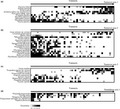- Record: found
- Abstract: found
- Article: found
Plant community assembly in suburban vacant lots depends on earthmoving legacy, habitat connectivity, and current mowing frequency

Read this article at
Abstract
In suburban regions, vacant lots potentially offer significant opportunities for biodiversity conservation. Recently, in Japan, due to an economic recession, some previously developed lands have become vacant. Little is known, however, about the legacy of earlier earthmoving, which involves topsoil removal and ground leveling before residential construction, on plant community composition in such vacant lots. To understand (dis)assembly processes in vacant lots, we studied 24 grasslands in a suburban region in Japan: 12 grasslands that had experienced earthmoving and 12 that had not. We surveyed plant community composition and species richness, and clarified compositional turnover (replacement of species) and nestedness (nonrandom species loss) by distance‐based β‐diversities, which were summarized by PCoA analysis. We used piecewise structural equation modeling to examine the effects of soil properties, mowing frequency, past and present habitat connectivities on compositional changes. As a result, past earthmoving, mowing frequency, soil properties, and past habitat connectivity were found to be the drivers of compositional turnover. In particular, we found legacy effects of earthmoving: earthmoving promoted turnover from native grassland species to weeds in arable lands or roadside by altering soil properties. Mowing frequency also promoted the same turnover, implying that extensive rather than intensive mowing can modify the negative legacy effects and maintain grassland species. Decrease in present habitat connectivity marginally enhanced nonrandom loss of native grassland species (nestedness). Present habitat connectivity had a positive effect on species richness, highlighting the important roles of contemporary dispersal. Our study demonstrates that community assembly is a result of multiple processes differing in spatial and temporal scales. We suggest that extensive mowing at local scale, as well as giving a high conservation priority to grasslands with high habitat connectivity at regional scale, is the promising actions to maintain endangered native grassland species in suburban landscapes with negative legacy effects of earthmoving.
Abstract
Our study investigated the impacts of land‐use changes on grassland plant community in suburban vacant lots. We successfully revealed that multiple factors, including past earthmoving, current mowing, and habitat connectivity, drive multiple compositional shifts (turnover and nestedness) and affect endangered grassland species.
Related collections
Most cited references51
- Record: found
- Abstract: not found
- Article: not found
The Importance of Land-Use Legacies to Ecology and Conservation
- Record: found
- Abstract: found
- Article: not found
Balancing biodiversity in a changing environment: extinction debt, immigration credit and species turnover.
- Record: found
- Abstract: not found
- Article: not found
